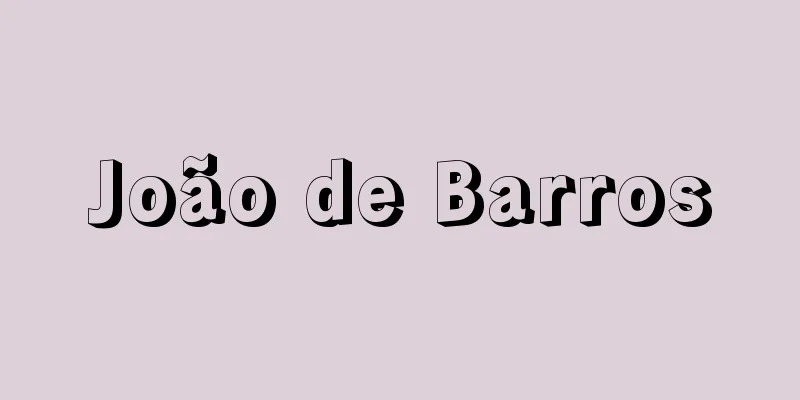The debate on Japanese capitalism

|
A debate among Marxists over the characteristics of Japanese capitalism that took place from the late 1920s to the early 1930s. The central issue in the debate was whether the relationship between landlords and tenant farmers in rural areas should be considered feudal or semi-feudal, and further, whether the feudal elements of Japanese capitalism as a whole should be considered essential or merely relict, so it is sometimes called the feudal debate. [Harunari Yamazaki] Origins and development of the controversyThis debate began when the Japanese Communist Party, which was formed in 1922 (Taisho 11), was dissolved the following year and re-established in 1926, causing a split between Communist and non-Communist factions among Japanese Marxists. Yamakawa Hitoshi, Sakai Toshihiko, Arahata Kanson, Inomata Tsunao and others who were initially involved in the formation of the Communist Party but did not join the re-established party founded the magazine Labor and Farmers at the end of 1927 (Showa 2) and made it clear that they would pursue a different line from the Communist Party. Thereafter, they and their political and theoretical sympathizers were known as the Labor and Farmers faction. The points of conflict between the Communist and Labor and Farmers factions extended to all aspects of the socialist movement, but one particularly important point of conflict was over revolutionary strategy and its premise: understanding of Japan's political and economic structure. While Communist theorists emphasized the semi-feudal nature of Japan's state apparatus and landlord-tenant relations, and advocated a two-stage revolutionary strategy of moving from bourgeois-democratic revolution to proletarian revolution, the labor-farmer faction argued that Japan's state power was already in the hands of the financial bourgeoisie, and that although various feudal relics remained, the more important factor was the rapidly developing monopoly capitalism, and that feudal relics could not be liquidated without overthrowing capitalism. Among the labor-farmer faction, it was Inomata who put forward this argument most vigorously and in detail. It was not until Noro Eitaro (1929) appeared on the Communist side as a critic of Inomata that the debate over the structural characteristics of Japanese capitalism began in earnest. Noro criticized Inomata's theory for dissolving the special structure of Japanese capitalism, which developed under the specific historical conditions, and the special contradictions that arose from it, into capitalism in general, and tried to provide a historical justification for the decisive significance of the survival of semi-feudal production relations in rural areas for the formation and development of Japanese capitalism. Noro also aimed harsh criticism at the devout Marxist economist Kushida Tamizo. In his essay "On the Characteristics of Tenant Rents in Our Country" (1931), Kushida carefully demonstrated that Japan's high rents in kind were not feudal rents as Communist theorists claimed, but pre-capitalist rents resulting from competition among small tenant farmers, reinforcing Inomata's theory. Kushida also countered, and thus the debate began to develop from general to specific. [Harunari Yamazaki] The heyday of controversyBetween 1932 and 1933, the seven-volume Lectures on the History of the Development of Japanese Capitalism was published, with Yamada Moritaro, Hirano Yoshitaro, Hani Goro, Hattori Shiso, Kobayashi Ryomasa and others as its main authors (Noro was the central planner and editor, but he was unable to write the planned essays due to illness and going underground). In 1934, Yamada's and Hirano's essays in the Lectures were published as An Analysis of Japanese Capitalism and The Structure of Japanese Capitalist Society, respectively. The essays in the Lectures all had a common tone that emphasized the semi-feudal characteristics of Japanese capitalism, and those who held this viewpoint were subsequently called the Lectures school. The theory of Japanese capitalism in the Lectures was largely consistent with the understanding of Japan in the Comintern's Theses on the Situation in Japan and the Tasks of the Japanese Communist Party (the so-called 1932 Theses), which were published shortly after the publication of the Lectures began. As the first systematic social scientific analysis of the history and current state of Japanese capitalism, "Lectures" caused a great stir among intellectuals, but it also drew criticism from labor-farmer scholars and critics such as Mukaizaka Itsuro, Tsuchiya Takao, Okada Soji, Ito Yoshimichi, as well as Inomata and Kushida. The labor-farmer criticism was focused on Yamada's "Bunsetsu" (Analysis) and Hirano's "Kikai" (Organization), especially the former. Yamada remained silent, but Hirano and other lecturers from the labor-farmer faction fought back against the labor-farmer criticism, and the debate reached its peak between 1934 and 1936. The topics of the debate ranged from the stage of economic development at the end of the Edo period (the "manufacturing era" debate, which began with Tsuchiya Takao's criticism of Hattori Yukimasa, who argued that Japan had reached "the manufacturing era in the strict sense"), the social character of the new landlord class at the end of the Edo period, to the historical character of the Meiji Restoration, among other issues in the history of the end of the Edo period and the Meiji Restoration. However, the focus was still on agricultural issues, such as whether the landlord-tenant relationship was essentially a feudal production relationship, tenant fees, and structural theory, such as whether it was appropriate to describe Japanese capitalism as military and semi-feudal, as well as related methodological issues. [Harunari Yamazaki] Significance of the controversyThis debate was forcibly ended when the leading members of the Lecture Group were arrested in the "Com Academy Incident" in July 1936, and the leading members of the Labor-Farmer Group were arrested in the "Popular Front Incidents" in December 1937 and February 1938. However, this debate, which ultimately drew in experts in various social science fields such as history, economics, political science, and law to discuss the entire process of the birth and development of Japanese capitalism, had an extremely large impact on the development of social science in Japan. Because this debate was based on partisan conflict between Communist and non-Communist parties, it sometimes ended up as an exchange of criticism for the sake of criticism, but it strongly stimulated intellectual interest in the various problems involved in the development of modern Japanese society, which took place under historical conditions different from those of Western countries. It can be said that it was through this debate that Japanese social sciences first began to seriously address the reality of Japan. [Harunari Yamazaki] "Otsuka Kinnosuke et al., eds., Lectures on the History of the Development of Japanese Capitalism, 7 volumes (1932-33/Reprint edition, 1982, Iwanami Shoten)" ▽ "Kobayashi Yoshimasa, 'Retrospectives on the Debate on Japanese Capitalism' (1976, Shiraishi Shoten)" ▽ "Koyama Hirotake, ed., 'The History of the Debate on Japanese Capitalism', 2 volumes (Aoki Bunko)" [References] | | | | | | | | | | | | | | |Source: Shogakukan Encyclopedia Nipponica About Encyclopedia Nipponica Information | Legend |
|
日本資本主義の特質をめぐって、1920年代末から1930年代前半にかけて行われたマルクス主義者の間の論争。論争の中心的問題点が、農村の地主・小作関係を封建的あるいは半封建的関係とみなすかどうか、さらに日本資本主義全体について封建的諸要素を本質的な要素とみるか、それとも単なる遺制とみるかにあったので、封建論争とよぶこともある。 [山崎春成] 論争の発端と展開この論争は、1922年(大正11)にいったん結成された日本共産党が翌年早くも解体したあと、1926年に再建される過程で、日本のマルクス主義者の間に共産党系と非共産党系の分岐が生じたことに端を発している。共産党の結成に当初関与しながら再建共産党には参加しなかった山川均(ひとし)、堺利彦(さかいとしひこ)、荒畑寒村(あらはたかんそん)、猪俣津南雄(いのまたつなお)などは、1927年(昭和2)末に雑誌『労農』を創刊して、共産党とは異なる路線を追求することを明らかにした。以後、彼らおよびその政治的理論的同調者たちは労農派とよばれた。共産党系と労農派との対立点は、社会主義運動のすべての側面に及ぶが、とくに重要な対立点の一つは、革命戦略およびその前提となる日本の政治・経済構造の認識における対立であった。共産党系の理論家たちが、日本の国家機構や地主・小作関係の半封建的性格を強調し、そこからブルジョア民主主義革命からプロレタリア革命へという二段階革命戦略を主張したのに対し、労農派は、日本の国家権力はすでに金融ブルジョアジーの手中にあり、さまざまの封建的遺制が残っているにしても、より重要な要素は急速に発達した独占資本主義であり、資本主義を倒すことなしには封建遺制も清算できないと論じた。労農派のなかでこのような主張をもっとも精力的かつ詳細に展開したのは猪俣であった。その猪俣に対する批判者として共産党側から野呂栄太郎(のろえいたろう)が登場(1929)するに及んで、日本資本主義の構造的特質をめぐる論争が本格的に始まる。野呂は、猪俣の説を、特有の歴史的諸条件に規定されつつ発展した日本資本主義の特殊な構造とそこから生ずる特殊な矛盾とを資本主義一般に解消させてしまうものであると批判して、農村における半封建的生産関係の存続が日本資本主義の形成・発展にとって決定的な意義をもつことを歴史的に論証することに努めた。野呂はまた篤実なマルクス経済学者櫛田民蔵(くしだたみぞう)にも厳しい批判の矢を向けた。櫛田がその論文「わが国小作料の特質について」(1931)で、日本の高率現物小作料は共産党系理論家の主張するような封建地代ではなく、零細な小作人の競争の結果として生ずる前資本主義地代であることを丹念に論証して、猪俣説を補強したからである。櫛田も反論にたち、こうして論争は総論から各論に発展し始めた。 [山崎春成] 最盛期の論争1932年から1933年にかけて、山田盛太郎(もりたろう)、平野義太郎(よしたろう)、羽仁五郎(はにごろう)、服部之総(はっとりしそう)、小林良正などを主要執筆者とする全7巻の『日本資本主義発達史講座』(その企画・編集の中心は野呂であったが、彼は病気と地下活動入りのため予定した論文をついに執筆できなかった)が刊行され、1934年には『講座』所収の山田、平野の論文がそれぞれ『日本資本主義分析』『日本資本主義社会の機構』として刊行された。『講座』の諸論文は日本資本主義の半封建的特質を重視する見地を共通の基調としており、以後この見地にたつ人々は講座派とよばれる。『講座』の日本資本主義論は、その刊行が始まってまもなく発表されたコミンテルンの「日本における情勢と日本共産党の任務に関するテーゼ」(いわゆる三二年テーゼ)の日本認識ともほぼ合致するものであった。『講座』は日本資本主義の歴史と現状に関する最初の体系的な社会科学的分析として、知識人の間に大きな反響をよんだが、他方で向坂逸郎(さきさかいつろう)、土屋喬雄(たかお)、岡田宗司(そうじ)、伊藤好道(こうどう)、さらに猪俣、櫛田など、労農派系の学者、評論家からの批判を呼び起こした。労農派の批判は山田『分析』、平野『機構』、とくに前者に集中した。山田は沈黙を続けたが、平野ほかの講座派の論客が労農派の批判に応戦し、論争は1934~1936年のころ最盛期を迎えた。論争の題目は、幕末の経済発展段階(「厳密な意味でのマニュファクチュア時代」に達していたとする服部之総に対する土屋喬雄の批判から始まったマニュファクチュア論争)、幕末の新地主層の社会的性格、明治維新の歴史的性格など、幕末・維新史の諸問題にも広がったが、中心はやはり、地主・小作関係は本質的に封建的な生産関係であるかどうかという農業問題論、小作料論と、日本資本主義に対する軍事的半封建的という規定が適切かどうかという構造論、およびそれに関連する方法論上の問題であった。 [山崎春成] 論争の意義この論争は、1936年7月の「コム・アカデミー事件」で講座派が、1937年12月および1938年2月の「人民戦線事件」で労農派が、その主要メンバーを検挙されたことによって強制的に終結させられた。しかし最終的には、日本資本主義の生成と発展の全過程について、歴史学、経済学、政治学、法学などの社会科学諸分野の専門家をも引き込んで展開されるようになったこの論争が、日本の社会科学の発展に及ぼした影響はきわめて大きいものがあった。この論争は、共産党系対非共産党系という党派的対立を根底にもっていたため、批判のための批判の応酬に終わることもあったが、欧米諸国とは異なる歴史的諸条件のもとに行われた日本の近代社会の発展過程に含まれる多様な問題への知的関心は、この論争によって強く刺激された。日本の社会科学は、この論争を通じて初めて日本の現実に本格的に取り組んだといえる。 [山崎春成] 『大塚金之助他編『日本資本主義発達史講座』全7巻(1932~33/復刻版・1982・岩波書店)』▽『小林良正著『日本資本主義論争の回顧』(1976・白石書店)』▽『小山弘健編『日本資本主義論争史』全2冊(青木文庫)』 [参照項目] | | | | | | | | | | | | | | |出典 小学館 日本大百科全書(ニッポニカ)日本大百科全書(ニッポニカ)について 情報 | 凡例 |
>>: Lectures on the History of the Development of Capitalism in Japan
Recommend
Osaka Sango
〘Noun〙 In the Edo period, this was the general ter...
Arab Republic of Egypt (English spelling)
...This ended the rule of foreign nations that ha...
Brittle fracture
When a force is applied to a solid material, it d...
Omiya-in Temple
Fujiwara Kisshi was the Empress of the 88th Emper...
Order to abolish donations
In 1789 (Kansei 1), the Order for the Cancellatio...
Pleiades star cluster
An open star cluster in Taurus. Approximately 6 st...
Banking capital - Ginkoushihon (English spelling) banking capital
It is a traditional term that collectively refers ...
Rhododendron ripense (English spelling) Rhododendronripense
…[Yoshiharu Iijima]. … *Some of the terminology t...
Pterygota
…Insects are divided into two groups based on the...
Acromion
…the glenoid cavity is shallow, allowing for grea...
Shiraho
〘 noun 〙 The withered and whitened ears of a plant...
Shinro-tei
Year of death: 1819 Year of birth: Unknown. A comi...
Karl Jaspers
Along with Heidegger, he is one of the leading Ge...
Electrophilic substitution reaction
Substitution reaction by electrophilic reagents. E...
Scutari
…the city of Scutari, located in the western part...









